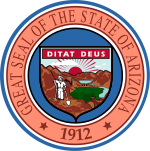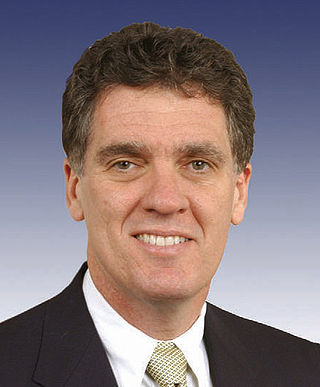
David Joseph Weldon is an American politician and physician. He was a Republican member of the United States House of Representatives, representing Florida's 15th congressional district, and was an unsuccessful candidate for the Republican nomination in Florida's 2012 U.S. Senate race.
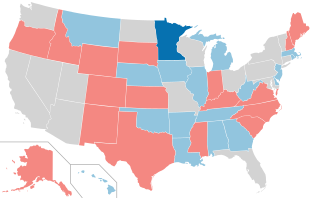
The 1990 United States Senate elections were held on Tuesday, November 6, 1990, with the 33 seats of Class 2 contested in regular elections. Special elections were also held to fill vacancies. The Democratic Party increased its majority with a net gain of one seat from the Republican Party. The election took place in the middle of President George H. W. Bush's term, and, as with most other midterm elections, the party not holding the presidency gained seats in Congress.

The 1988 United States Senate elections was an election for the United States Senate. Held on November 8, the 33 seats of Class 1 were contested in regular elections. In spite of the Republican victory by George H. W. Bush in the presidential election, the Democrats gained a net of one seat in the Senate. Seven seats changed parties, with four incumbents being defeated. The Democratic majority in the Senate increased by one to 55–to–45.

The 1978 United States Senate elections were held on November 7, in the middle of Democratic President Jimmy Carter's term. The 33 seats of Class 2 were contested in regular elections. Special elections were also held to fill vacancies. Thirteen seats changed hands between parties, resulting in a net gain of three seats for the Republicans. Democrats nevertheless retained a 58–41 majority.

The 1972 United States Senate elections were held on November 7, with the 33 seats of Class 2 contested in regular elections. They coincided with the landslide re-election of Republican President Richard Nixon. Despite Nixon's landslide victory, Democrats increased their majority by two seats. The Democrats picked up open seats in Kentucky and South Dakota, and defeated four incumbent senators: Gordon Allott of Colorado, J. Caleb Boggs of Delaware, Jack Miller of Iowa, and Margaret Chase Smith of Maine. The Republicans picked up open seats in New Mexico, North Carolina, and Oklahoma, and defeated one incumbent, William B. Spong Jr. of Virginia.

The 1964 United States Senate elections were held on November 3. The 33 seats of Class 1 were contested in regular elections. Special elections were also held to fill vacancies. They coincided with the election of President Lyndon B. Johnson by an overwhelming majority, to a full term. His Democratic Party picked up a net two seats from the Republicans. As of 2022, this was the last time either party has had a two-thirds majority in the Senate, which would have hypothetically allowed the Senate Democrats to override a veto, propose constitutional amendments, or convict and expel certain officials without any votes from Senate Republicans. In practice, however, internal divisions effectively prevented the Democrats from doing so. The Senate election coincided with Democratic gains in the House in the same year.

The 1954 United States Senate elections was a midterm election in the first term of Dwight D. Eisenhower's presidency. The 32 Senate seats of Class 2 were contested in regular elections, and six special elections were held to fill vacancies. Eisenhower's Republican party lost a net of two seats to the Democratic opposition. This small change was just enough to give Democrats control of the chamber with the support of an Independent who caucused with them.

The 1946 United States Senate elections were held November 5, 1946, in the middle of Democratic President Harry S. Truman's first term after Roosevelt's passing. The 32 seats of Class 1 were contested in regular elections, and four special elections were held to fill vacancies. The Republicans took control of the Senate by picking up twelve seats, mostly from the Democrats. This was the first time since 1932 that the Republicans had held the Senate, recovering from a low of 16 seats following the 1936 Senate elections.

The 1930 United States Senate elections occurred in the middle of Republican President Herbert Hoover's term. The 32 seats of Class 2 were contested in regular elections, and special elections were held to fill vacancies. With the Great Depression beginning to take hold, Republican incumbents became unpopular, and Democrats picked up a net of eight seats, erasing the Republican gains from the previous election cycle. Republicans retained control of the U.S. Senate since Vice President Charles Curtis cast the tie-breaking vote. This was the first of four consecutive Senate elections during the Depression in which Democrats made enormous gains, achieving a cumulative pick-up of 34 seats.

The 1998 Massachusetts gubernatorial election was held on November 3, 1998. Acting Governor Paul Cellucci was elected to his first term as Governor of Massachusetts.

Samuel Pearson Goddard III is an American attorney and politician who served as the mayor of Phoenix, Arizona from 1984 to 1990 and as the 24th attorney general of Arizona from 2003 to 2011. He is a member of the Democratic Party.
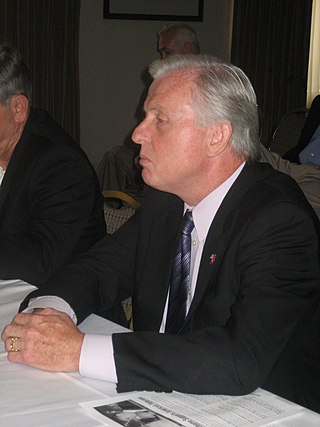
Jack E. Wagner is an American Democratic politician from the Commonwealth of Pennsylvania. He served as Pennsylvania Auditor General, and previously served in the State Senate and Pittsburgh City Council.
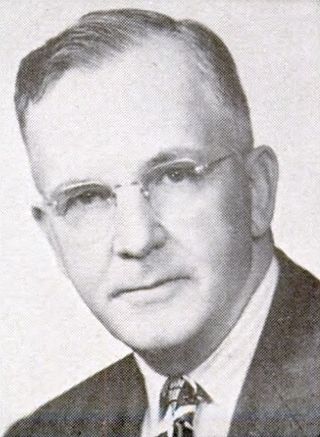
Wesley Abner D'Ewart was a U.S. Republican politician who served in the United States House of Representatives from Montana's 2nd congressional district from June 5, 1945, to January 3, 1955.

The 1958 Alabama gubernatorial election was held on November 4, 1958. Incumbent Democrat Jim Folsom was term limited and could not seek a second consecutive term.

The 1920 Minnesota gubernatorial election took place on November 2, 1920. Republican Party of Minnesota candidate J. A. O. Preus defeated Independent challenger's Henrik Shipstead and the Mayor of St. Paul, Laurence C. Hodgson. Shipstead narrowly lost to Preus in the Republican primary of that year and challenged him in the general, beating the Democratic nominee but coming far short of winning the general.

The 1920 United States Senate elections in Arizona took place on November 2, 1920. Incumbent Democratic U.S. Senator Marcus A. Smith ran for reelection to a third term, but was defeated by former Delegate to the U.S. House of Representatives from the Arizona Territory Ralph H. Cameron in the general election. Cameron would become the first Republican elected to the office of U.S. Senator from Arizona since the state joined the union in 1912. The same year, Republican Governor Thomas Edward Campbell was reelected to a second term.

The 1911 Arizona gubernatorial election took place on December 12, 1911, for the post of the first elected Governor of Arizona. The Democratic nominee George W. P. Hunt defeated the Republican nominee Edmund W. Wells. Hunt and Wells were both members of the Constitutional Convention, Hunt being chosen President and leading the way for much of the drafting. Wells refused to sign the Constitution, considering aspects like the initiative, referendum, and especially judicial recall to be too radical.
James Haden Kerby was an early Arizona politician, elected 6 different times to the office of Secretary of State in the 1920s and 1930s. Kerby served the second longest tenure of that office, his 12 years being only beaten by Wesley Bolin's 28 years, 9 months, and 18 days.

Milton Speer "Mit" Simms, son of Maria Louisa Speer and Franklin Robert Simms, was born in Rockford, Alabama in 1873 and grew up there. He moved to Arizona Territory sometime before 1902. On December 25, 1902, he married his first wife, Lillian Mary McCabe (1881–1941). No children emerged from this marriage.

Bo Hatchett is an American attorney and Republican politician from Cornelia, Georgia, serving as a member of the Georgia State Senate for District 50.

